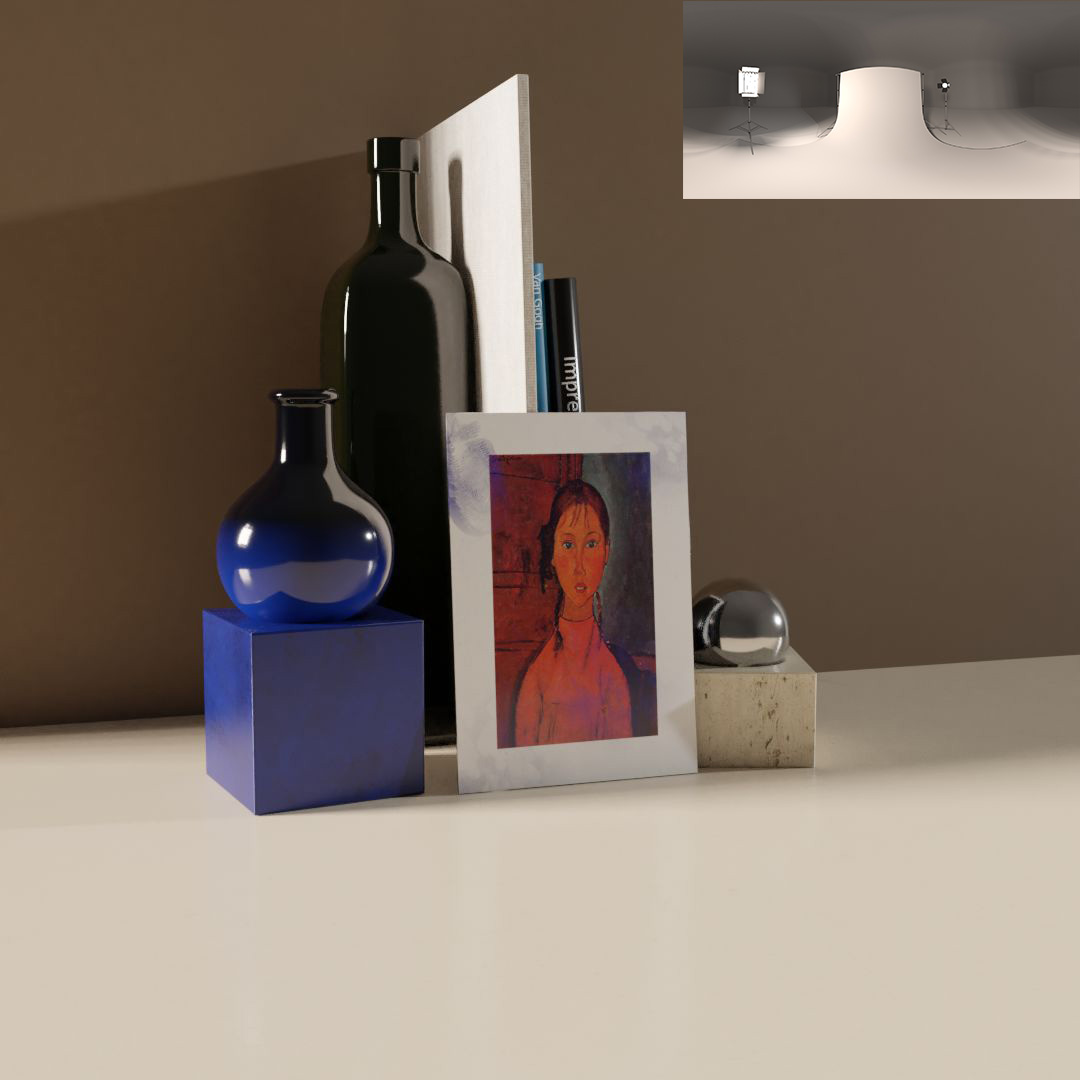

PxrEnvDaylight - A daylight simulation shader where you can supply any time and location on Earth or simply place your sunlight where you like it.PxrSphereLight - For users that miss using a point light, this light can be useful to illuminate in all directions.PxrDiskLight - Great for using as an area light or in combination with filters to make a spotlight.PxrDistantLight - This light is perfect for use as a Sunlight or other distant source where light rays are nearly parallel and cover the whole scene.PxrRectLight - The rectlight is the commonly used rectangle-shaped area light.

#Blender renderman hdri how to
Id like to know how to use them in final renders (EEVEE or Cycles), because quite frankly they appear fantastic. Analytic Lights - These are the preferred choice. Blender 2.8 and newer contains a number of HDRis in it by default for LookDev.As you can see there is a problem with a black outline around Shadow Catcher. Workaround for this problem is to turn off Render > Freestyle option.Note there are three main ways to light a scene: Set Scale to Render Size and place it between Image and Alpha Over.ĩ. Add Input > Image node, open same background image. In Node Editor click on Compositing icon, and check Use NodesĨ. In render, settings make sure that Film > Transparent is checked on.ħ. Your backplate is not visible in a rendered scene. Switch back to Rendered Viewport and in Node editor rotate HDRI to match backplate more or less. Lock Camera and position your scene so it fits the imageĥ.
#Blender renderman hdri full
Select Camera, Focal Length: 35mm, Camera > Full Frame 35mm Camera, in Render Tab Dimensions need to match image size: 2400 x 1600pxĤ. We need to apply these settings to Blender camera too. This backplate was taken with Nikon D800 and 35mm lens. Check what Camera and lens were used to take a picture. Ctrl+N and Background Images > Add Image.ģ.

We need to set them visible only to the camera.Ģ. Sometimes we want to use some quality pictures as a background. Select Shadow Catcher and in Cycles Settings uncheck Transmission. Back to Rendered Viewport, there is a problem with transperency channel so we need to fix it. Select new object and in Cycles Settings please check Shadow CatcherĤ. Create > Plane and match it position to Sphere created before. We need some kind of surface to bounce light coming from HDRI environment.Ģ. Unfortunately in our test scene shadows are not visible. You can control brightness of your environment with Background Strength value. Use Location Y for closer or distant look, and Rotate Z for rotation. Connect Generated to Vector and it’s done. It doesn’t work properly so we need to add another Node: Shift A Input > Texture Coordinate. Go to Render tab switch to GPU device if your maschine is equpped with descent GPU card. Switch to World and press Surface > Use Nodes.Ĥ. Apply material, Go to Surface > Use Nodes and choose Glass.Ģ. Remove default scene and create UV sphere.
#Blender renderman hdri download
You can download complete tutorial project file from here Preparing test sceneġ. Let’s check how it works along with HDRI lighting and backplate image used for background. Last version of Blender 2.79 comes with Shadow Catcher feature.


 0 kommentar(er)
0 kommentar(er)
